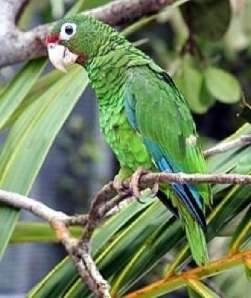Fishermen Take Lead in Helping Endangered Whales
The decades-old saga of the endangered Northern right whale has long stranded animal welfare advocates and the lobstermen on opposite shores of Cape Cod Bay. Until now.

For the first time in history, ten captive-bred endangered Puerto Rican parrots were released yesterday to join the last 40 parrots existing in the wild.
The release into a national forest in Puerto Rico is the result of a 32-year combined effort between the U.S. and Puerto Rico to help bring this species back from the brink of extinction.
A director at the U.S. Fish and Wildlife Service said, "This proves that if people work together we can help save endangered species, and in particular, the magnificent Puerto Rican parrot."
The parrot was once so abundant and widespread that Indians used them as pets and food. The population reached an all-time low in 1975 of only 13 birds left in the Mountains of Puerto Rico.
*UPDATE*
(July 21, 2000) Nine of the ten parrots released into the wild to join the last 40 surviving birds in that species are still alive, healthy, and adapting to their new environment.
The first seven days after any release are the most critical to the birds survival. Over three weeks have passed and we still have 90 percent survival. The parrots chances increase with each day that passes.
As they adapt to the wild, visits to supplemental feeders have declined, and some of the birds are beginning to forage and fly further away from the flock, according to the U.S. Fish and Wildlife Service.
Be the first to comment